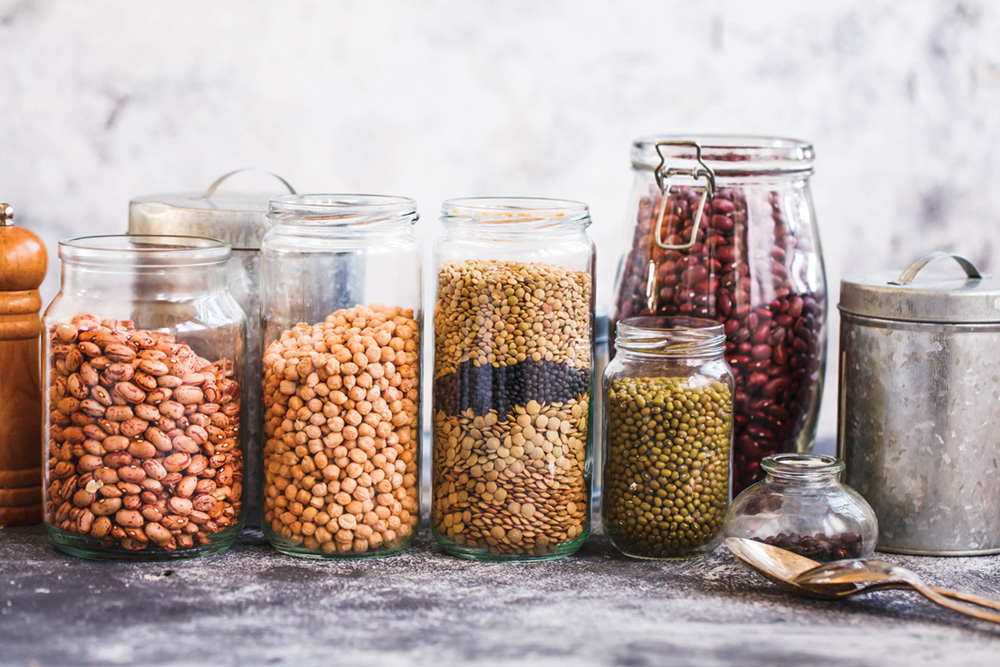Alex Rushmer on why beans and pulses are good for our health
For as long as I’ve had my own kitchen, there has been a shelf dedicated to jars of dried pulses and beans. Some are easily recognisable and are used with great regularity: the red lentils need to be replenished once every couple of weeks, for example, as do the chickpeas. Others might sit in their glass prisons for months, just waiting for their chance to shine: I’m not sure the jar of adzuki beans has ever been refilled; the same could be said for the container of tiny greeny-beige mung beans.
A brief glance at the bean shelf reveals at least a dozen varieties. The reason for this is threefold: firstly, pulses pop up in various world cuisines with amazing regularity and my desire to learn to cook foods from all over the world knows no bounds. A complex Indian feast might require urad daal, toor dal and mung dal whereas a mexican dinner would be incomplete without pinto beans and black-eyed peas. I need cannellini (or maybe flageolet) beans to cook with rosemary and garlic and serve with roast lamb and it would be impossible to make an authentic cassoulet without a stash of tarbet or haricot beans. And let’s not forget the yellow split peas that are an essential element of any good old English soup, along with some deliciously salty pork.
The second reason for an increasingly overloaded shelf is cost. Dried beans are cheap, really cheap. A kilo of red lentils – enough to make tarka daal for a small army – costs in the region of two pounds. Even a relatively luxurious pulse, like a creamy butterbean, can be purchased for around a fiver for the same amount. It’s silly to buy in quantities smaller than this as evidenced by the third reason I have built up quite a collection: namely shelf life.
“Some are far more receptive to quick cooking than others”
Given the fact that they are dried, there is no reason why these happy little pulses can’t sit in the cupboard for years, which is part of their inherent genius and appeal. And in an age when we are becoming increasingly aware and conscious of food waste, what can be better than having a cupboard full of foods that will, in all likelihood, outlast us?
Of course, this level of survivability does have a downside: pulses and beans aren’t the most instantaneous of foods. The contents of most of the jars need to be soaked overnight before then being cooked, which itself can sometimes take hours (I once had to top up a pan of kidney beans with fresh water at least four times because they took so long) but a little organisation is a small price to pay for such a nutrient dense and delicious foodstuff.
Having said that, some are far more receptive to quick cooking than others. Lentils, red lentils in particular, can be turned into daal in around half an hour. Puy lentils take a little longer but neither need soaking thus removing one level of required organisation entirely. The other alternative is to invest in a pressure cooker which has, in the past, enabled me to get from bullet-hard chickpea to hummus in little over an hour. Now, that’s what I call having a finger on the pulse.

